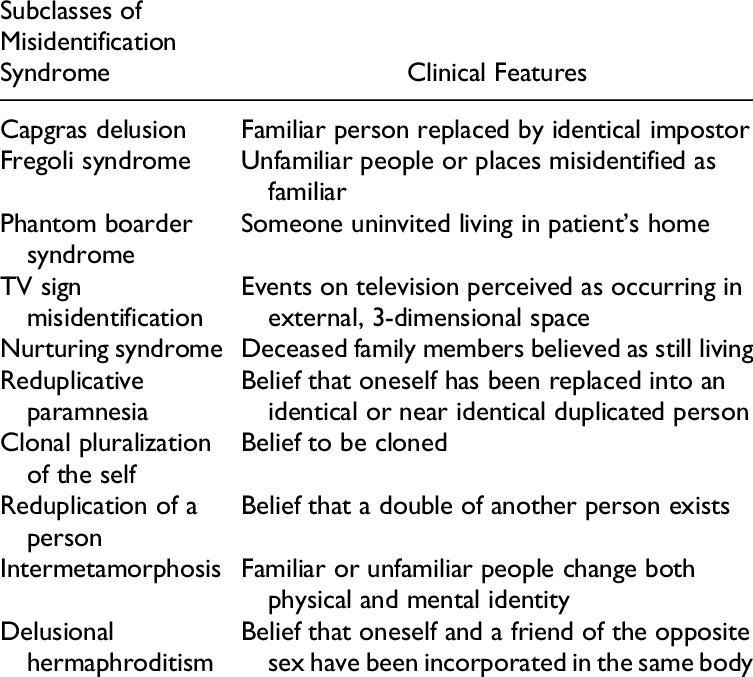The human mind remains a mystery to science, it is able to create the most impressive ideas, but also the most surprising absurdities, the proof is the delusional syndromes of false identification, it is distortions of thought that lead those affected to represent reality in a strange way, so to speak.
One of the main symptoms of delusional misidentification syndromes is the illusion of thought content. Illusion is a belief that a person considers to be true, although it does not have an empirical or logical basis.
- In delusional misidentification syndromes.
- Illusions or illusory beliefs are present.
- Leading to the building of a perception of oneself and others that has nothing to do with reality.
- Often part of psychiatric diseases or more complex neurological disorders.
- Here we show you three of these syndromes.
Capgras syndrome or Capgras delirium is a disorder that suggests that one of the people close to him has been replaced by an imposter, assume that the person who is familiar to him is actually a double risk, this inability to recognize is what makes him one of the syndromes. delusional false identification.
What happens in Capgras’ illusion is that the person is able to physically recognize a person close to him, but there is no sense of familiarity in his mind, it is a sensory perception without subjective sensations or feelings. Hence the impression of strangeness that others inspire.
What is a disconnect between the visual recognition system and emotional memory?Capgras delirium can also be directed at yourself, in this case a person affected by this problem thinks it has been replaced by another, this usually occurs in the context of psychosis or as a result of a brain injury.
Fregoli delirium is a rare disease that is part of delusional syndromes of false identification, is linked to paranoia and presents itself in several ways, in the most typical case, the person believes that he has a stalker and is capable of different appearances. So, when you see someone you know, you may think he’s the stalker who took a familiar form to deceive you.
Another way this illusion manifests itself is almost the other way around what was said above, the person believes that he knows strangers. When you see them, you identify them as people you’re familiar with. Similarly, you may think you know places or objects you don’t know.
Although science has not precisely established the causes, it is known that the disorder is related to a dysfunction of “association links”, that is, with the ability to synchronize physical and mental perceptions. It is usually caused by brain damage or as part of paranoid delirium.
Jealousy always has a strong component of imagination. In fact, he lives more in fantasy than in reality, which is a constant suspicion, which is rarely tested or corresponds to the facts, in the case of Othello syndrome, is carried to its fullest expression.
In Othello syndrome there is an obsessive belief that the couple is unfaithful. There is no doubt about this and all that is expected is to be able to catch the person “in flagrant crime”. Which makes it one of the false delusion syndromes. identification is the fact that those who suffer from this illusion cannot identify their partner as they really are, what you see in this person is a traitor or a traitor, so invest so much time and energy in seeking evidence of their infidelity.
One characteristic of Othello syndrome is that the person affected – the permanent presence of a third party in their relationship – however, when asked about the characteristics of that person with which their partner would deceive him, he could not explain it. There are very few occasions when they can give information on the subject.
These aren’t the only delusional misidentification syndromes, there are several others. What is common to all is the difficulty of recognizing or recognizing the other, they are almost always linked to psychiatric pathologies of a certain severity and therefore need to be treated by a professional.

